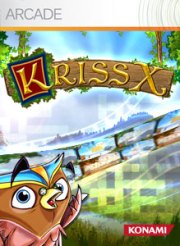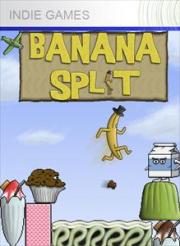 A WDesm exclusive for XBoxHornet
A WDesm exclusive for XBoxHornet
The hits just keep on coming ’round these parts. We managed to snag an exclusive interview with Kris Steele of Fun Infused Games about his upcoming release, Abduction Action! for XBLIG, and we also talk a little about his past release, Nasty, a very sweet-and-under-appreciated platformer. Hang on tight kids, and enjoy the ride!
WD: To those unfamiliar with your upcoming game, can you explain Abduction Action!’s gameplay?
FI: Abduction Action! casts you as an aspiring UFO pilot visiting Earth for the first time and more than ready to cause a little havoc. You must use the tractor beam of your UFO to pickup Earthlings and other objects in order to complete a series of tasks given to you by your superiors. Tasks you must complete include things like abducting five cows, dropping rocks on angry jocks, or going toe-to-toe with a police helicopter.
While you can exclusively work through the Story Mode, the game also has a sort of Grand Theft Auto vibe, meaning that many gamers will probably have just as much fun tossing around Earthlings, dropping objects on them, etc. as they would completing the Story Mode missions.
WD: How many hours of gameplay should gamers be expecting? Is there much replayability?
FI: I believe there is a lot of gameplay in Abduction Action!, more than enough to make the game well worth your 80 Microsoft Points. The normal game (story mode) features five levels with 6 to 10 tasks each. I expect it will take the average gamer several hours to master and complete each of these levels. There is also a Score Attack mode that gives you one life as you try and progress through all the game’s enemies and obtain the highest score.
Additionally I believe a lot of gamers will simply find enjoyment in starting any level and tossing some Earthlings around just for the fun of it.
WD: Your company, Fun Infused Games, has also released Nasty, a shooter/platformer for XBLIG. How is Abduction Action! similar/different from Nasty, and what skills were transferable to the new game?
FI: Both games are 2D games and have some similar artistic stylings, but they don’t share much else after that. Nasty plays much more like a platformer with guns while Abduction Action! has you flying through the sky and forces you to be more creative to dispatch enemies and complete levels. Overall Abduction Action! gives you more freedom in what you can do. Nasty had a ton of levels (100) but the five levels in Abduction Action! are much larger and have a lot more to do in each.
WD: What first inspired you to create games, and what has inspired Abduction Action! and Nasty?
FI: At a very young age, I fell in love with gaming. I grew up playing lots of Commodore 64 games and later transitioned to the NES. I really enjoyed the NES / SNES / Genesis years and those style of games have been the ones that I have really wanted to make.
Nasty was largely inspired by Bubble Bobble and Contra… the game plays like you have the Contra characters stuck inside the levels of Bubble Bobble. I’ve always really enjoyed co-op games and feel that they’re underrepresented today, so creating a game that allowed this was also one of my goals.
With Abduction Action!, it started with the idea of having a game that involved Abducting Earthlings. I’ve always had an interest in UFOs and other unexplained phenomenon and thought this would be an interesting concept to explore.
WD: How long was the development time for Abduction Action!?
FI: It’s been about eight months in development now, ever since the day after I put Nasty up for review. It was my intention to have this released last December, but I expanded the initial concept from just abducting Earthlings to include many more varied tasks and put another month or so into just polishing the game after it was essentially completed. The game plays and looks a lot better due to the extra time I spent on it.
WD: Why are gamers going to get hooked on Abduction Action!?
FI: The core concept alone is different from anything else gamers have played and is very fun. The in-game characters also show a lot of personality, gamers will get a kick out of picking up Earthlings just to hear what they scream as you lift them up and drop them to their demise.
WD: Have you found the XNA/XBLIG coding experience enjoyable and worthwhile? Why or why not?
FI: Coding in XNA has been great, really easy to get into and there are a lot of good tutorials/examples that can be found online to help out (along with a lot of great people in the community willing to lend a hand).
Financially my first game Nasty hasn’t done as well as I would have liked. I believe it’s a game people would really enjoy but I initially priced it too high and it has faded into obscurity in-part because of that. Regardless, I enjoyed making Nasty and learned a lot in the process, including some mistakes I hope to avoid for my second release.
WD: Nasty has received patches post-release, and your Nasty homepage even has a poll for which feature gamers most want to see Nasty get next update. Do you intend to give the same long-term loving to Abduction Action! ?
FI: Yes I do. I want to give gamers the best game I can and listening to their feedback is the best way to do that. Nasty is a much better game now then when it was released because of changes that I have made based on feedback from gamers and I fully intend on using the same approach not just with Abduction Action! but also with releases after that.
I also feel improving my games is a good way to give back to gamers who purchased my games and to renew interest in previously released games that may otherwise be collecting dust.
WD: As a game dev, what do you think are the most effective tools for attracting and retaining fans? With all the possible ways to focus attention (high quality presentation, invasive marketing, addictive gameplay, bug-free gameplay, etc), you must have to pick and choose favorites.
FI: The most important thing is to make good games. Gamers know what is fun and it doesn’t take fancy graphics or elaborate marketing plans have a fun game. The core concept of your game must be solid and enjoyable and heavily polished. It should be fun all around and it is important for it to be free of any buggy behavior, as that will quickly pull a gamer out of the reality the game creates.
WD: What is your opinion on the use of various ‘bonus’ features (online leaderboards, DLC ‘hidden’ in title patches, avatar support, badges/awards, unlockables, etc) in XBLIG games? Do they significantly add to the game’s quality, or simply bog down development time and add more opportunities for things to go awry?
FI: As a gamer, I’m personally not all that interested in most of these features but as a game developer, I realize that many gamers are. With Xbox Live Indie Game titles, we’re at a bit of a disadvantage to Xbox Live Arcade games as we aren’t given the option of true leader boards, gamer scores, achievements, downloadable content, so we have to make due best we can (for instance using peer-to-peer methods to share high scores or create local ‘Awardment’ systems). Implementing these features can be a fair amount of work for what feels like only a marginal benefit, but if the style of your game fits, I think they can be important to include.
Avatars are a bit of a different story… Gamers seem to like them a lot and Xbox Live Indie Games are in a position to take advantage of them more-so than Xbox Live Arcade Games (shorter time to market, less risk in making the games means we’ve got more liberty to try new things with Avatars). I haven’t personally delved much into Avatar usage but it is something that I’ll be looking into for future games.
Thanks Kris! I know that I’m certainly looking forward to some cow-throwing, and I can only wonder what you mean by the “Realistic UFO flight” comment on your website. Thanks again to Fun Infused Games for taking the time to answer our questions, and keep tuning in for even more previews, interviews, reviews, and contests!
View a trailer of Abduction Action! here.
Filed under: Developer interviews, Developer Interviews - XboxHornet Exclusives, Developers websites, First look, XBLA and Community game videos | Tagged: XBLIG, xblig exclusive, XBLIG interview, Xbox Live Indie Games, Xbox News, xbox preview | Leave a comment »


 Featured XBLIG
Featured XBLIG



































 Featured XBLIG No.2
Featured XBLIG No.2